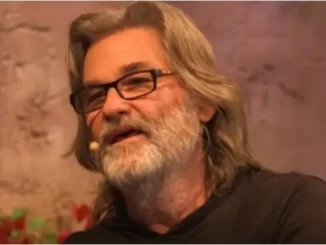What if cancer could be defeated not with invasive surgery or toxic chemicals, but by convincing the cancer cells to destroy themselves?
That’s exactly what researchers at Stanford University are on the verge of achieving. In a major breakthrough, scientists have developed a powerful molecule that forces cancer cells to self-destruct, using the body’s own natural process known as apoptosis—a built-in mechanism that tells damaged or unwanted cells when it’s time to go.
This isn’t science fiction. It’s real. And it may very well mark the beginning of a new, smarter era in the fight against cancer.
Understanding the Science: What Is Apoptosis and Why It Matters

Apoptosis is like a self-destruct button built into every cell in your body. Under normal conditions, when cells become damaged, old, or dysfunctional, they activate this programmed death response and quietly remove themselves. It’s a critical part of how the body stays healthy.
Cancer, however, hacks the system. Malignant cells learn how to evade apoptosis, continuing to grow, divide, and spread uncontrollably. That’s what makes cancer so dangerous—it refuses to die.
Stanford’s newly engineered molecule is designed to restore this natural fail-safe, telling cancer cells, “Game over.” And for the first time, researchers can do it without harming surrounding healthy cells.
How the Self-Destruct Molecule Works
Here’s where things get groundbreaking. The Stanford team has created a precision-guided molecule that specifically targets cancer cells. Once it binds to the malignant cells, it activates genes that were meant to trigger apoptosis but had been silenced or overridden by the tumor.
This isn’t a blunt-force approach like chemotherapy. It’s more like a codebreaker that slips into the system and flips the correct switches—one cell at a time. The molecule reawakens the body’s own defense mechanism, guiding cancer cells to essentially commit suicide while sparing healthy tissue.
That level of precision is what sets this apart from most traditional therapies.
Why This Breakthrough Could Redefine Cancer Treatment
The current standards of cancer care—surgery, chemotherapy, and radiation—are undeniably life-saving. But they also come with a host of painful side effects, from nausea and fatigue to long-term damage to vital organs and the immune system.
Video : Why Stanford’s new cancer research is give many hope
This new molecule could change everything. By only targeting cancer cells and leaving healthy ones untouched, it promises a treatment option that’s gentler on the body but tougher on the disease.
Imagine fighting cancer without hair loss, vomiting, or weakened immunity. That’s the potential future researchers are aiming for.
What Makes This Molecule So Unique?
This isn’t just a new drug—it’s a new strategy. Most therapies attack tumors from the outside in. This one works from the inside out, activating an internal process that cancer cells had shut down.
Some key features that make it revolutionary include:
- Selective targeting: It can distinguish between healthy and cancerous cells with high precision.
- Gene activation: It flips the apoptosis switch that’s been suppressed in tumor cells.
- Minimal collateral damage: It reduces the risk of inflammation, scarring, or toxicity to other parts of the body.
- Broad application: Though tested on multiple cancer types, its adaptable design means it could be tailored to various tumors.
This molecule isn’t just smart—it’s strategic.
From Lab to Life: The Road to Clinical Use
Currently, this treatment is in preclinical development, with early trials showing promising results in lab-grown human cells and animal models. The next phase will involve clinical trials on human patients, and if the outcomes hold, we could see this therapy available to the public in the coming years.
Stanford’s research team is already partnering with biotech firms to fast-track development and secure funding for expanded studies. The end goal? A safe, scalable therapy that could become a first-line treatment for several types of cancer.
The Hope This Brings to Patients Worldwide
More than 10 million people die from cancer each year. For many of them, it’s not the disease itself, but the side effects of treatment that diminish their quality of life.
Video : Programming Cancer Cells to Self-Destruct
This breakthrough offers something different—a way to treat cancer without breaking the body in the process. A way to heal that works in harmony with the systems we already have in place, rather than battling them.
It’s hope in molecular form.
Conclusion: A Future Where Cancer Ends Itself
The idea that a single molecule could teach cancer cells to press their own self-destruct button is more than inspiring—it’s revolutionary. This discovery from Stanford researchers doesn’t just give us another weapon in the war on cancer. It completely rewrites the rules of engagement.
By leveraging apoptosis, this innovation harnesses the body’s own intelligence, allowing us to treat disease from the inside out. And as clinical research advances, we may soon reach a time when cancer isn’t something to fight—but something we can simply tell to stop.
Because sometimes, the smartest cure is one that lets the enemy defeat itself.


